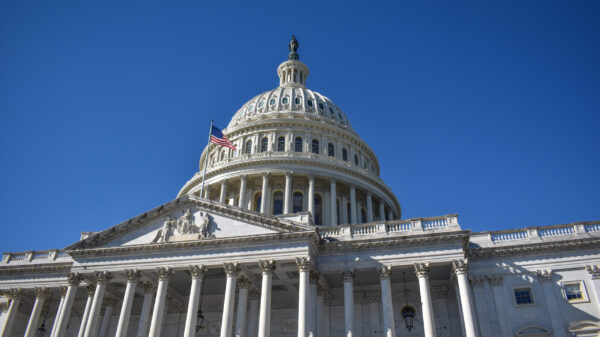The nation has been riveted over the past few weeks tracking the nomination, public hearings, confirmation, and the swearing in of Associate Justice Brett Kavanagh. President Trump nominated Kavanagh to fill the U.S. Supreme Court vacancy of retiring Associate Justice Anthony Kennedy. Those who follow the high court closely, know this is the decades old coveted swing seat on the nation’s highest court. There is always a lot of dust kicked up in the arena over all high court nominees, but many knew this was going to be the blood bath battle for this generation over this specific swing seat. Let’s talk about why all the fireworks over this seat.
In all presidential election cycles, the general election debates are always centered on the palatable judicial demeanor sought by the presidential candidates over possible picks to the court. Simply put, candidate Trump wanted a strict construction constitutional originalist, and candidate Clinton wanted a more progressive forward-thinking jurist, who would protect Roe v. Wade, same sex marriage, and believes the constitution is a living breathing ever evolving document. Fast forward from the 2016 election, and one can see this judicial philosophy of how the courts should be filled transposed to clearly defined party lines as played out recently in the U.S. Senate debate. Republicans want a strict construction constitutional originalist, and Democrats want progressive (liberal) modern application making new case law from the bench.
Backing away for a moment from the Republican – Democrat court battle, lets take a short stroll back to the inception of our great nation and the formation of all three branches of government. Every country in its inception has a moral code for the framework of its governance. For Muslim countries their core moral foundation is centered around the Quran; for England and America our core moral foundation is the Ten Commandments. History teaches us the moral foundation of the English Common Law was the Ten Commandments and the genesis for the U.S. Constitution was the English Common Law. The cornerstone for western civilized law is the Ten Commandments. We have three branches of government (equal power) in the Separation of Powers Doctrine: executive, legislative and judicial. The legislative branch makes law and appropriates government funding, and the executive branch oversees government agencies, executes these laws, and provides regulatory oversight, in most cases. The judicial branch was designed by our forefathers to have a very limited yet equal role when constitutional questions arise. The court was designed to be thumbs up or down on the constitutional questions, not to make new law from the bench, which is the role of the legislative branch. The idea is when a jurist puts on the sacred robe, they separate themselves from their family, upbringing and political leanings; they do not represent anything or anyone, but the constitution. Ideally a U.S. Supreme Court Justice has only one boss: the U.S. Constitution.
Judicial Activism by using the judiciary to make new case law has plagued the integrity of our judiciary for decades. In this environment, radical issues that are too hot to handle by a legislative body can be settled by the courts filled by unelected lifetime appointments, who have total job security. All you need is one plaintiff with standing and one lawyer to file a lawsuit in a carefully selected judge shopping exercise, with an appellant path to the U.S. Supreme Court hoping to set a new judicial precedent, or in lay terms, making law from the bench. This works in a philosophical environment that the constitution should be a living and breathing and flexible to change with modern times. Highly charged issues like abortion and same sex marriage bypassed the legislative process and new case law being established by the court. The Democrats have managed to have control of the high court for decades with this philosophy prevalent.
Constitutional originalist and strict constructionism maintain the idea that the courts role should be very limited and practice judicial constraint, by only applying the constitution to each case. This philosophy maintains the constitution was relevant in the formation of our country and relevant today. The constitution held us together as a country not subject to every wind of new doctrine or trending fad. Honest enterprises, religious liberties, and the constitution are safe in the hands of a jurist that shares this judicial philosophy in the role of the courts. The Republicans have been trying for decades to bring a majority of the court back to this position.
This seat vacated by Associate Justice Anthony Kennedy was the coveted seat and invoked the battle between judicial activism versus strict constructionism. Approximately 60 percent plus of President Trump’s 2016 election support emerged from this list of twenty-three selected for the high court who had been vetted as constitutional originalist and strict constructionist. President Trump fulfilled his promise in his first two appointments to the higher court, by picking from this list.
On a more personal note, this Supreme Court seat was very big for me and so many on both sides of this debate. The battle lines were between constitutional originalist and strict constructionism versus judicial activism. I went to work as a volunteer for President Ronald Reagan in 1980 going door to door in my county. Fast forwarding thirty-eight years, I have been engaged in hundreds of campaigns, worked for two Republican Governors, served as president of an economic, social and moral nonprofit, and yes, even ran for statewide office. I served in all of these positions with one overarching goal: seeing economic, social and constitutional conservatives elected to office. All of this in hopes of one day a U.S. Senate that gives our courts back to constitutional originalist and strict constructionism.
Over the years the Supreme Court has corrected previous decisions it deemed unconstitutional, like the 1857 Dred Scott case. The case was centered on a slave seeking to be freed and becoming a U.S. Citizen. The high court rejected this notion stating he was brought from another country, was enslaved and the courts stated that the slaves were two-thirds human, so he had no standing in federal court and could not become a citizen. The U.S. Supreme Court rightly reversed this notion and scores of other judicial activism decisions down through the years.
Saturday, October 6, 2018, was a glorious day for me to see that coveted seat on the nation’s highest court returned to the original intent of our founding fathers. The events of this day are immeasurable.






















































